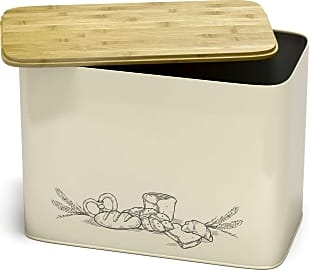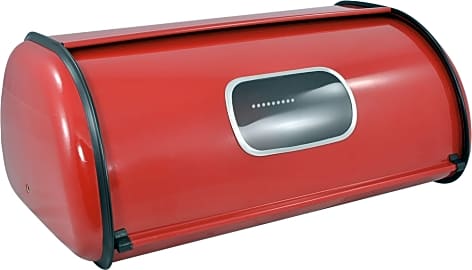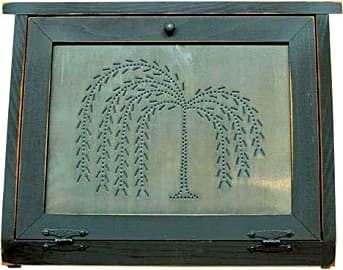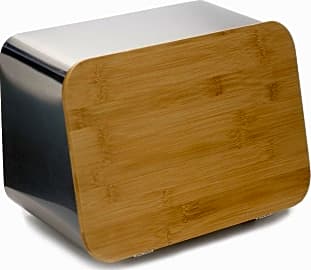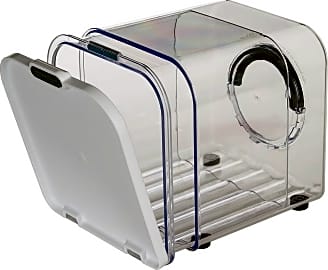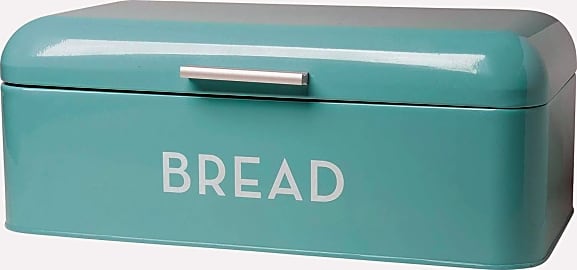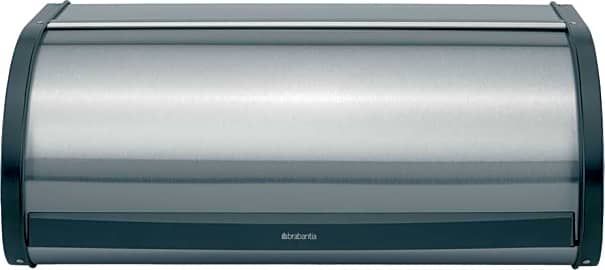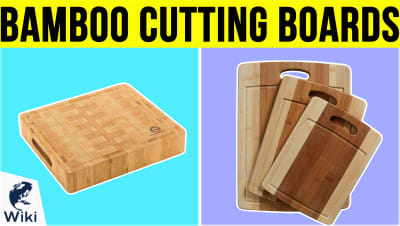The 10 Best Bread Boxes

This wiki has been updated 37 times since it was first published in July of 2015. You can keep all your baked goods fresh and out of sight while removing some of the clutter on your countertops and adding a touch of style to your kitchen decor with one of these bread boxes. Ideal for loaves, bagels, buns, crackers, pastries, and more, our selection includes classic wooden and metal models as well as modern designs for keeping the contents soft and free of mold. When users buy our independently chosen editorial choices, we may earn commissions to help fund the Wiki.
Editor's Notes
January 17, 2020:
We feel bread boxes are just as much a part of your kitchen decor as they are a functional item to keep your food fresh. Because of that, we did our best to include a variety of styles in our selection, so there would be one to suit every home. With that in mind, we decided to remove the Polder Deluxe since its design was simply too similar to the MyGift Metal Clear Front Window and Brabantia Matte. We also got rid of the Juvale Countertop because it was too small to accommodate most full-sized, store-bought loaves.
When it comes to functionality, a few models seem to take the cake. For example, the Cooler Kitchen Farmhouse Vertical has a large, vertical design that allows it to hold a lot of buns and loaves, and its removable bamboo lid doubles as a cutting board. The Alhome Stainless Steel also has a bamboo lid that can be used as a cutting board, though it simply flips down rather than being fully removable. Plus, it is a wall-mountable option, so you don't even have to use up any of your counterspace if you don't want to. While on the topic of saving counterspace, we would be remiss if we didn't mention the Prep Solutions Keeper GBK-8, which has an expandable design, allowing you to make it more compact when you are running low on bread, and increase its size when you bring a brand new loaf home from the store.
Those who are trying to cultivate a rustic look will want to consider the KWC America Willow Tree Tin and Cooler Kitchen Farmhouse Vertical, while those who prefer a more modern style you would do well with the Oggi Roll-Top 7199, MyGift Metal Clear Front Window, and Brabantia Matte. If you enjoy both classic and modern styling, we have the Now Designs Bin 5003, which incorporates some elements new and old.
Special Honors
Honey Can Do Bread Box The Honey Can Do has a smart design with a sliding draw that revels a knife storage compartment and cutting board, making efficient use of its countertop footprint. Its roll-top opening allows for easy access to the contents when needed, and the entire unit is constructed from eco-friendly bamboo. honeycando.com
Dutch Crafters Amish Made Plain Though pricey, the Dutch Crafters Amish is a historical reproduction of antique breadboxes from the late 1800s and, thanks to its high-quality construction, it can withstand years of use without any of the components failing. It is available in your choice of oak or cherry wood. dutchcrafters.com
It's Cool To Be Stale
These might merely be aesthetic pieces that won't be great for your bread.
If you bake bread at home, either in the oven or in an electric bread maker, or if you live near and patronize a good bakery, you know how quickly that bread can go stale. Most bakeries sell day-old bread at a very steep discount because its shelf life after that first day is so short.
Before we get into an explanation of how bread boxes can help keep your bread fresh, it's important that we understand exactly what happens when bread goes stale. It may seem like it defies common sense, but the freshness of bread has nothing to do with its moisture content. Sure, stale bread feels a lot drier than fresh bread, but if you weigh a loaf of bread when it's fresh and then again when it's gone stale, there would be next to no difference in its weight. Stale bread hasn't actually lost any water content.
What has happened is that the crystalline components of the bread's starch content that had hydrated to form into a viscous solution have realigned as they cooled, forming new crystalline structures that feel drier and harder than they had when they were initially broken down and cooked. The opposite experience of this is bread right out of the oven, when those starches are as completely broken down as they'll ever be.
That means that cold temperatures, like those in your refrigerator, are the enemy of fresh bread. They accelerate the crystallization of those starches, giving you worse bread faster. So, storing your bread in the fridge is generally a bad idea. You can always throw that bread in a toaster in an attempt to attack those crystalline structures with heat, which will work to some degree. The problem with that is that reheating bread will dehydrate it, even as it softens the starches within.
A bread box stores your bread at room temperature, ensuring it stays fresh as long as possible. A good bread box will let a little air flow through it, which keeps condensation and mold development at bay. Keep an eye out for bread boxes that seal too tightly. Some websites will ignorantly tout the tight seals of certain bread boxes, but you know better. These might merely be aesthetic pieces that won't be great for your bread.
Where The Bread Hides
Now that you understand what a good quality bread box means for the life of your fresh bread, you can see that the bulk of the bread boxes on our list check all the marks to create stylish, competitive options. Each boasts its own methods for ventilation and preservation, and each has its own unique look.
If you have a kitchen with limited space these are your best option.
The first thing you might want to consider is the material out of which your bread box is made. Our options include sheet steel, wood, and plastics, as well as a few combinations. Wood is the traditional choice, and it's the most naturally breathable of the materials, so you might not always see ventilation holes incorporated into wooden bread boxes.
Sheet steel models are usually designed to resemble old-fashioned tins, and they have a farmhouse appeal that would match a light, rustic design in a larger kitchen. They tend to have ventilation holes and hinged lids.
The plastic and metal models are meant to be space savers. They usually have a tapered rolling door design intended to minimize the footprint on your counter top. If you have a kitchen with limited space these are your best option.
More than anything else, though, you should consider the look of these bread boxes and how one will fit into the current decor of your kitchen. They all do a bang-up job keeping your bread fresh, and the differences in their looks is the biggest divide among them, so you can use that criterion to narrow down our list before taking things like size and materials into account.
Old Bread, Old Storage
People have stored their breads in a variety of bins and boxes for as long as bread has been around. How long that's been is something of a debate. It's been confirmed by archeological evidence that early man smashed wild grains in water to make them easier to eat and digest. The mixture would form a kind of paste not unlike the very crude dough in certain modern recipes.
People have stored their breads in a variety of bins and boxes for as long as bread has been around.
It's likely that, somewhere on the smoldering plains of ancient Egypt, an individual made such a mixture of crushed grain and water and left it for whatever reason on a hot surface. He probably came back for it later and discovered the way in which its consistency had been altered by the time and the heat. This may have lead him to experiment with the process further, eventually refining a bread making process that would start a revolution in human diet and agriculture.
Of course, this is all pre-historic speculation backed up by a little archeological evidence and, eventually, by hieroglyphic information. By the time the Egyptians began recording their experiences in hieroglyphics and other writings, bread must have been an established food, for it appears in their writing more or less from their beginning.
In those days, bread was stored in baskets woven from reeds and similar materials. It wouldn't be until bread migrated into European nations that we would see more Westernized efforts at maintaining freshness, which included homemade bread boxes very similar to some of the ones on our list.


